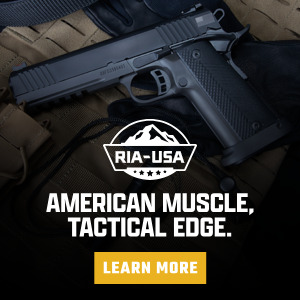In the firearms world there are so many various calibers it’s often hard to keep track. When an individual dives into a wide array of different calibers spanning over a century one thing becomes clear: some calibers are hard to find. These difficult to procure calibers are paired with equally as difficult to procure components. It’s a common problem for the die hard reloader and one worth discussing.
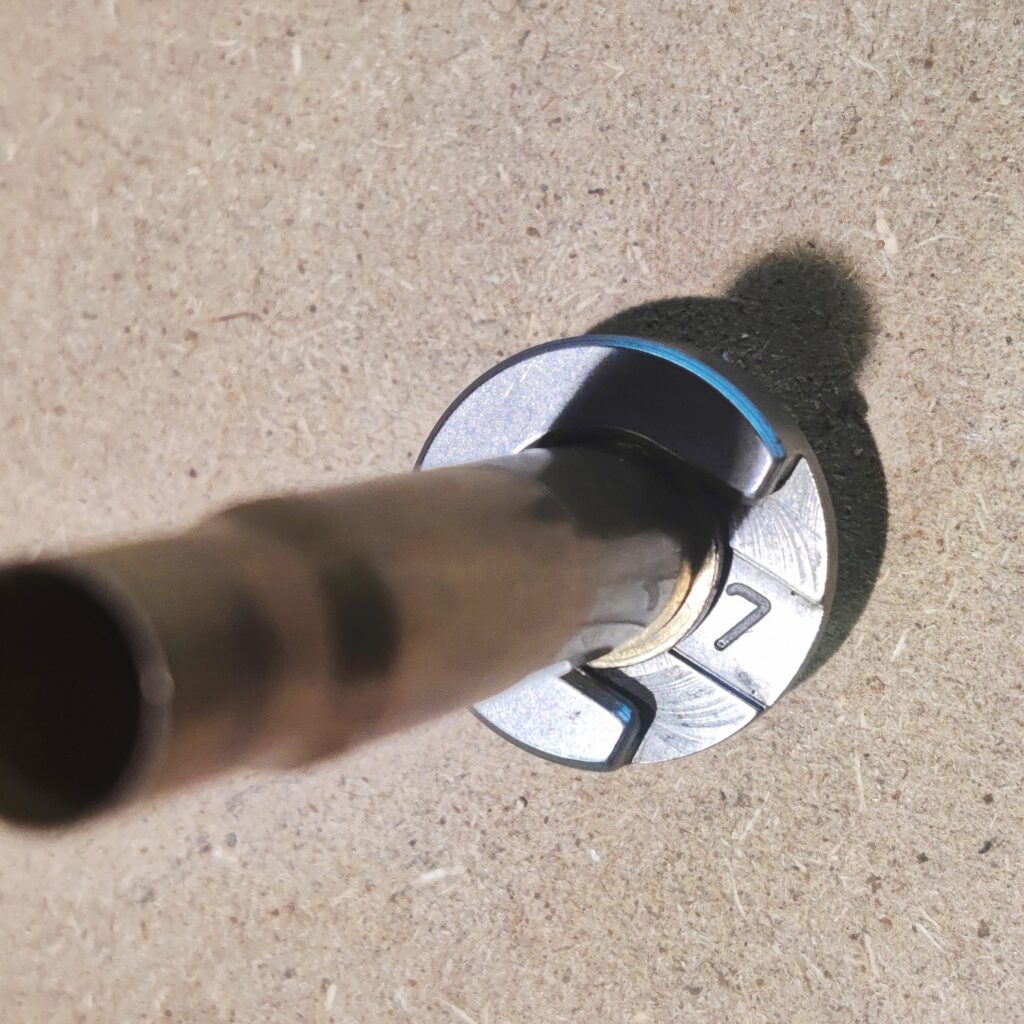
The shell holder required may not always be the one needed for the final caliber. Depending on how extreme of a case change you do, the shell may need to be resized further via turning.
History of Popularity:
Taking a look at some of the common calibers over the last 100 years there is a common trend. Let’s use the venerable Winchester 94 as an example. Starting out for hunting in 32/40 or 38/55, caliber options quickly expanded. Not only was it a great platform, it was one of the few rifles of the time capable of fast action cycling for follow up shots. When smokeless powders were introduced around the turn of the century, caliber choices grew exponentially across all platforms.
In 1895 smokeless powders took hold, even in the Winchester 94, and common calibers like 30/30 and 32 Winchester Special began making their rounds in hunting circles. 30/30 never lost popularity, but others like the 32 Winchester Special and 25/35 fell out of favor with the majority of shooters despite their excellent ballistics. For the reloader, these calibers are just as relevant today as they were in 1895.
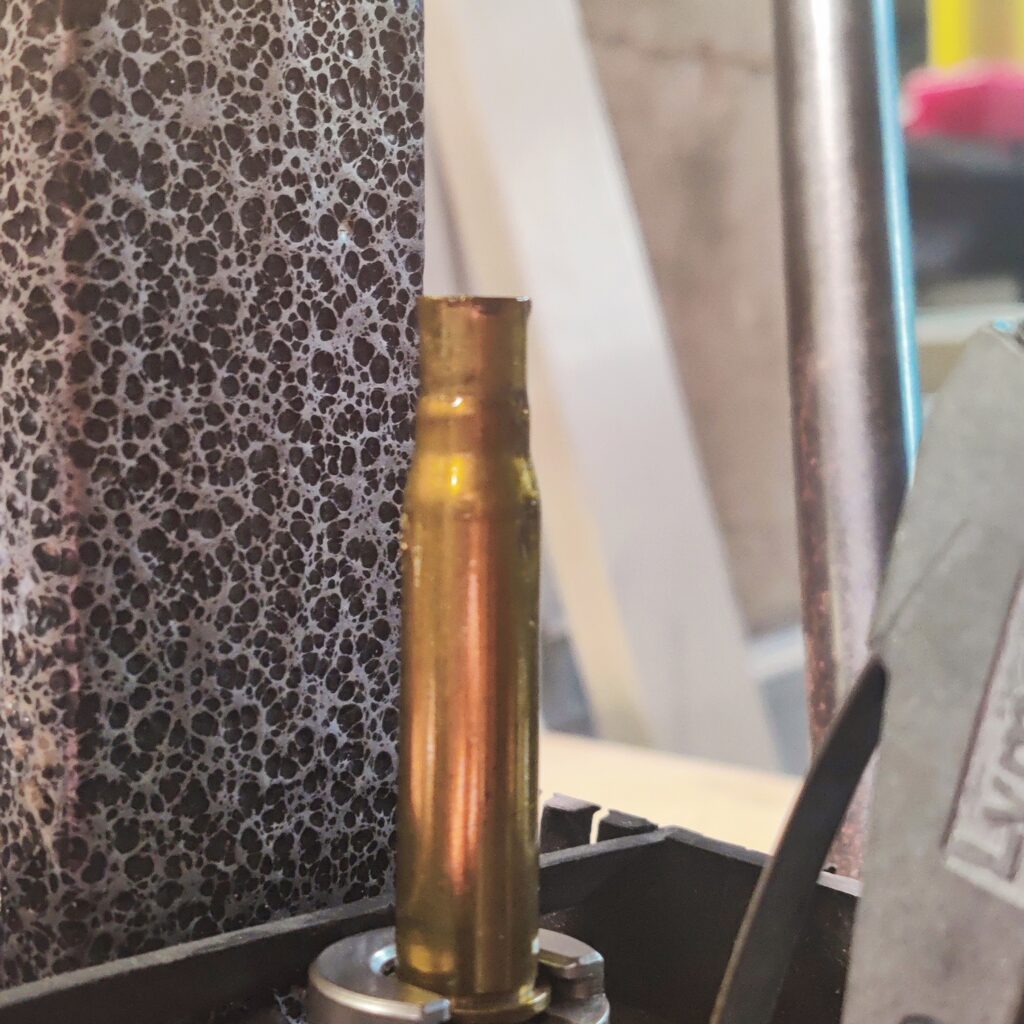
As the neck begins to expand the mouth will widen. It’s important to periodically check and make sure the neck isn’t collapsing.
Following the COVID 19 closure worldwide, manufacturers haven’t continued a lot of caliber component manufacturing like they once did. I ran into this when I acquired a beautiful Winchester 94 in 32 Winchester Special. It was a great compliment to my already multiple acquired 30/30. While brass was relatively easy to find, the price had skyrocketed making the 32 Winchester Special sit aside while the 30/30 was used.
Converting 30/30 to 32 Winchester Special:
In terms of case design and geometry, the 32 Winchester Special and 30/30 are similar looking while the 32 had a slightly longer and wider neck with a slight edge in overall ballistics for short range. They are comparable calibers perfect for hunting. While other calibers, like the 7-30 Waters, is incredibly similar to the 30/30 necked down to a 7mm projectile, the 32 WS is much more common and practical.
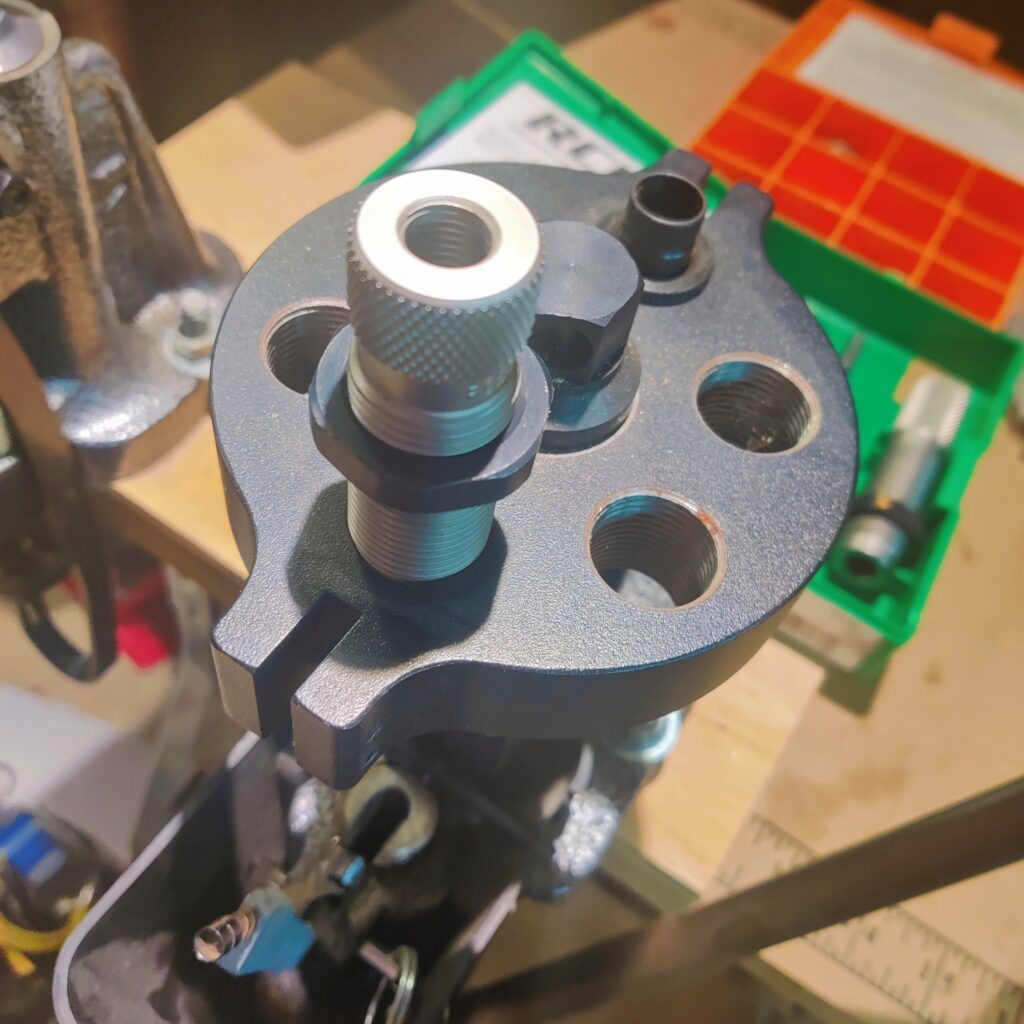
A die should be inserted without the neck expander and deprimer rod which reduces stresses in the first process of resizing.
So, with a 32 WS sitting and not being used, the only logical option is to make the appropriate brass for it. Converting brass can be a complicated process, but with 30/30 to 32WS the process is incredibly easy. All that’s needed: a set of 32WS reloading dies. This is a great start to learn the process of brass caliber conversions, as is the rare 7-30 Waters.
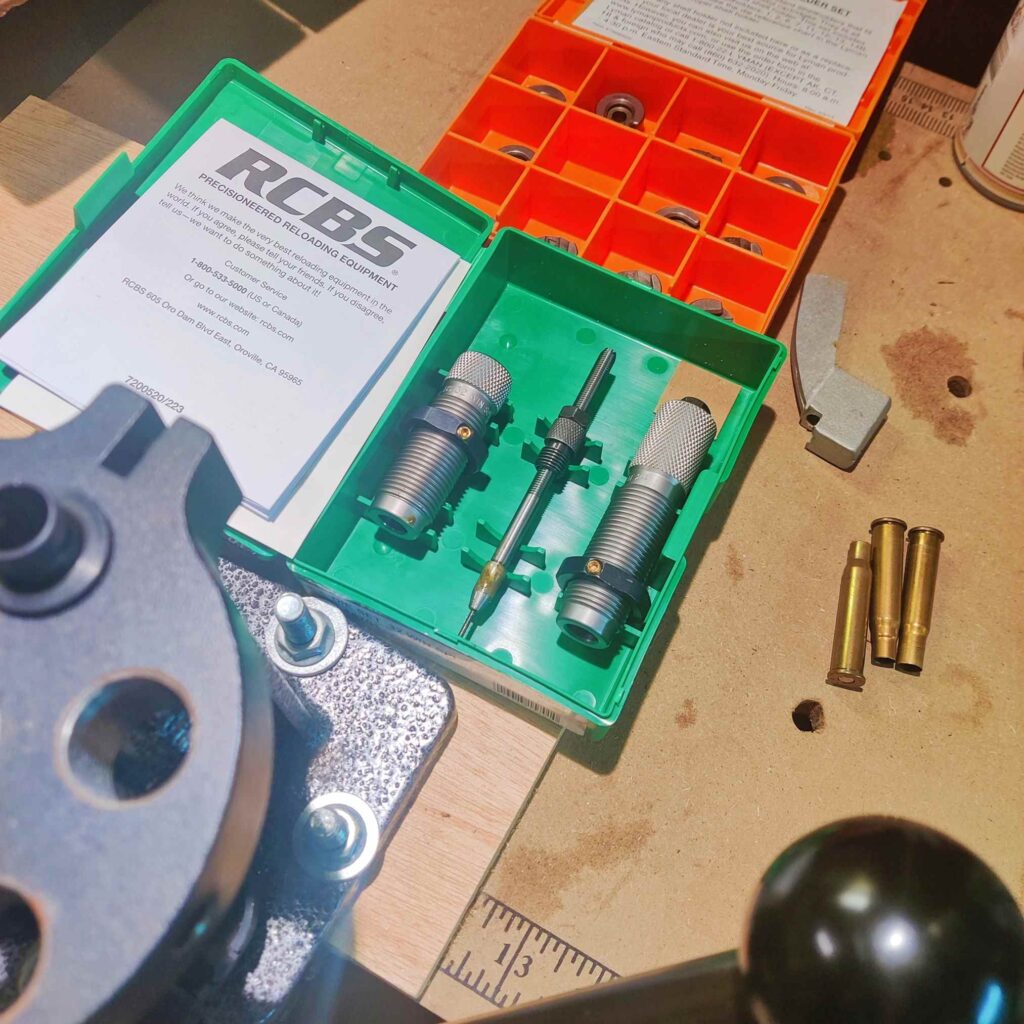
A high quality die set and shell holder are the only tools needed for simple case dimensional change. Since the shoulder is being changed make sure the die set has a removable stem.
Once the brass is cleaned the shoulder can be resized. Using a sizing die with the neck expander and deprimer rod removed, the cases should be lubed liberally. This takes some trial and error as too much lubricant can cause the shoulder to dent and reduce case capacity. Begin by running it through the sizing die slowly. It will begin to resize the brass but should not be one in one motion into the die. Backing the case out and inserting it gradually will slowly form the case to 32 WS. Insert, add pressure, remove, repeat.
Once the case is formed the neck will still be too small; 32 WS is a wider projectile (.321) than the 30/30 (.308). There are a few options at this point. The neck can be expanded for .321 by annealing the brass and softening the metal before expansion, or the neck can be expanded without annealing. If the 30/30 cases are old, or you’re unsure of the age, there is a very good chance that the neck could crack during expansion.
Once you’ve chosen to anneal or not, inset the depriming rod and neck sizer into the die. For some manufacturers, you may need to purchase a neck expander depriming rod. Companies, like RCBS, have the neck sizer incorporated into the rod. No matter what option chosen, the inside of the case neck needs to be lubricated.
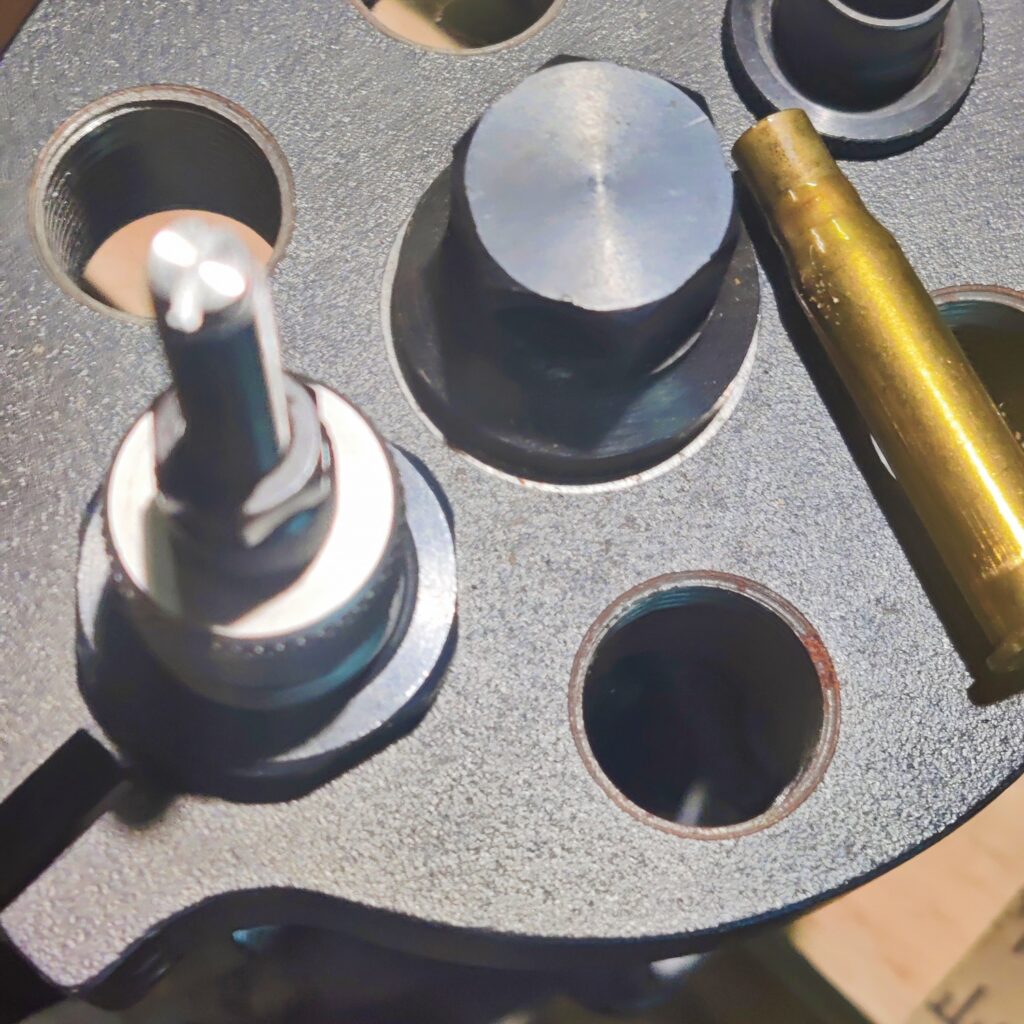
Now that the shoulder has been formed, we can see a ‘step’ on the new case neck that must be expanded and uniform. This is done with the full-length sizer die incorporating the stem and expender ball inserted.
The process for expanding the neck is the same as resizing the shoulder. Insert, add pressure, remove, repeat. The goal is to progressively expand the neck without causing excessive stress. If expanded all at once the neck has potential to ‘spring’ back somewhere between .308 and .321. If it rebounds, during loading the case neck will collapse inside the die potentially getting the case stuck in the die and inevitably destroying the case.
There will be resistance even on the removal of brass from the resizing die. Even with slow expansion, some spring will remain in the case neck. The neck sizing die, when pushed completely into the case and past the neck, needs to expand the neck again during the removal. Essentially, it is sized multiple times. This process should be done several times to ensure proper expansion.
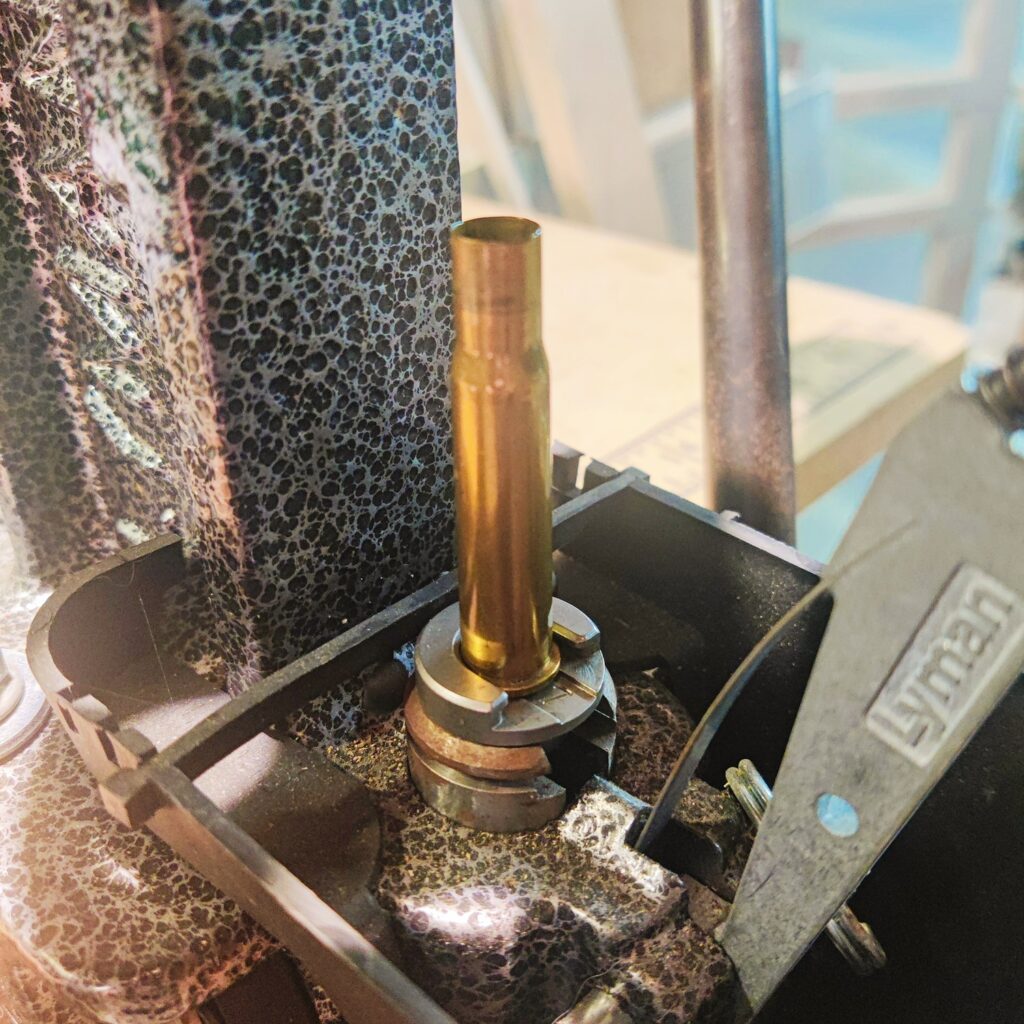
A complete and resized piece of brass will look nearly identical to a factory formed piece of brass. Check for any cracks, divots, or bends in the case or neck.
Once sized for the new caliber the lubricant needs to be removed as it can cause fouling of the powder and/or primers. This can be done by re-cleaning the brass or even running it through a polish cycle with dry media. The media will absorb the lubricant and assist with polishing during the next use, but will shorten the useful life of the media.
Is it Always This Easy?
The whole process of converting brass is not always as straight forward. There are additional options for fire forming brass which involves firing a partially formed case full of cream of wheat or cotton to force it into the shape of the chamber. Additionally, some calibers need work on the rim, base, or neck thickness. All of these additional requirements add a level of complexity that is not be to done without extensive experience. For example, 762×45 is a near impossible caliber to find. It can be made from 6.5/7.35 Carcano, 6.5 Mannlicher, or 220 Swift. The process to convert 30/30 to 32WS is two steps; converting any case to 762×45 contains no less than 8 steps.
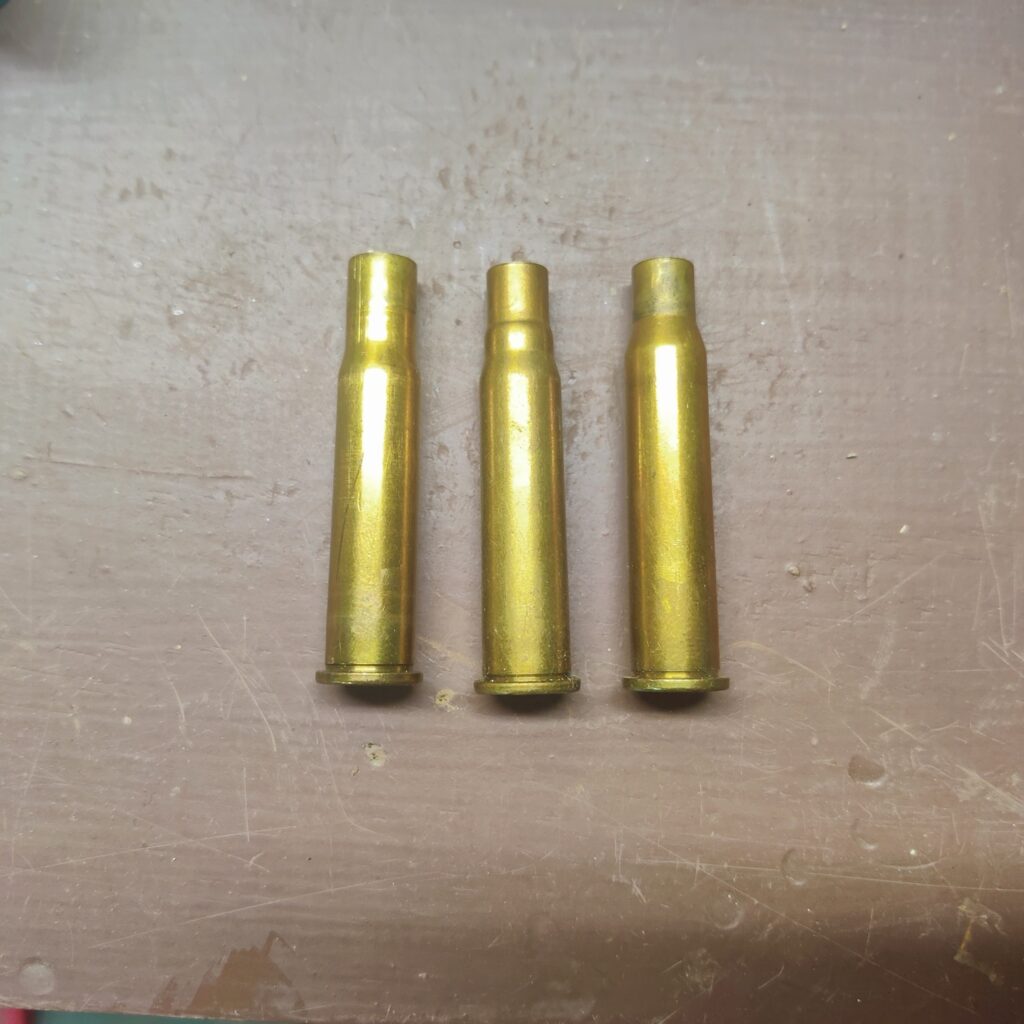
Shown here is the progression of neck changed on the 32 WS caliber conversion from 30/30 brass. From right to left we have 30/30 (right), shoulder sized for 32 WS (middle), and case neck and mouth sizing to 32 WS (left).
Do It Yourself?
Yes, by all means try to convert some brass to a caliber you need but please, start small. The potential for dangerous or deadly accidents is very real. However, the cost and time to convert brass is often much cheaper than actually purchasing reloadable cases for the correct caliber. A caliber like 7.62×45 is upwards of $60 for 20 cases. 32 WS cases range from $0.50-1.00 per case. If you have an overstock of 30/30 or some into some, sizing them for 32 WS may be less expensive and a project to improve your own skills.


